Search Results
Riley
On March 28, 2018, my husband brought Riley, my sweet, spunky six-year-old, to the emergency room for unbearable leg and hip pain, so unbearable she could no longer walk. I had a baby at home who wouldn’t take a bottle, so I had to let Tim, her dad, take her in without me. We were expecting to hear that she had a bone fracture or maybe even that something was broken.
We were not prepared to hear that she had cancer.
Every single day more than 40 parents will hear those exact same words, “Your child has cancer.”
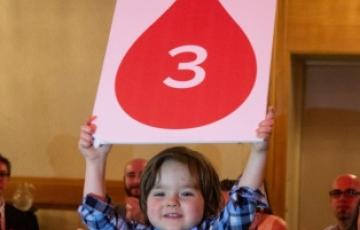
Stanley
Stanley was only 13 months old when he was diagnosed. He was a happy and healthy baby boy. Showing no previous symptoms or signs of sickness, Stanley was rushed to the ER one late Wednesday night because his parents, Joe and Krissi, thought he might have swallowed something. That was December 16, 2015. By 8p.m.

Nikolas
Hello, my name is Nikolas Davison. I am 14 years old (almost 15 in July) and have battled acute lymphoblastic leukemia (ALL) for the past four years, but I am now done with chemo and getting my port removed soon.
In November 2016, I was misdiagnosed with appendicitis and was taken to the hospital by my father, where they took my blood and ran several tests. This was a painful experience to go through and I was very scared. After more tests, they knew that I had cancer. I was shocked, scared and horrified. I never thought in a million years that I would get cancer.
Don
Like so many individuals diagnosed with blood cancer, I had zero thought that I might be ill, much less with a disease that could take my life.
I had signs and symptoms that something wasn’t quite right in my body, annoying things like shortness of breath, lightheadedness, and fatigue. However, nothing registered in my head until after my diagnosis.
It’s September 2005, and I am pretty much invincible, bulletproof! I could, in fact, leap tall buildings in a single bound! Yes, in my mind I was Superman!
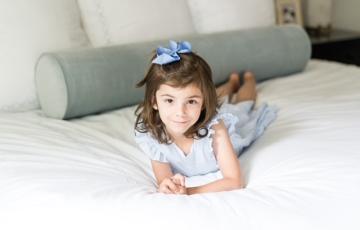
Claire
In February 2019, our daughter, Claire, was diagnosed with a rare form of acute myeloid leukemia (AML) just three short months after we celebrated her second birthday. We noticed a few discolored bumps on her body and assumed it was just a reaction to a new soap I had purchased, but then they began to pop up on other parts of her body.
Work, School & Finances
Work and SchoolSome people continue to work or attend school through cancer treatment, but others are not able to do so. Talk to your healthcare team to know what to expect from treatment so you can make the decision that is best for you.
Hospice
Hospice embodies a philosophy that delivers compassionate care to people, including children, who are approaching the end of their lives and provides emotional and physical support to them and their loved ones. Hospice offers medical care that focuses on maintaining and improving quality of life for someone whose disease or condition is unlikely to be cured. An interdisciplinary hospice team provides medical care, pain control and emotional and spiritual support that is tailored to the individual needs of each patient and his or her family.
Amber
I was diagnosed with stage 3 Hodgkin lymphoma (HL) right before my 27th birthday. I had just finished my Master’s degree and was engaged to get married the same year. I was a special education teacher and wasn’t sure what to do with the news.
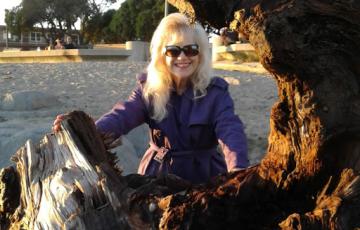
Vickie
I was diagnosed in 1974 at the age of 24 with Hodgkin lymphoma (HL). I had never even heard of it. The doctors did not know if I would survive as it was very aggressive. I had exploratory surgery (CAT scans and MRIs did not exist then as far as I know) and five weeks of radiation (I still glow in the dark, saves on night lights!!). Other than a couple of "unusual lymph nodes" over the years, I have been cancer-free. I went on to have two more great careers and was happily married for the first time at 49.
Robert
I am a three-time survivor of Hodgkin lymphoma (HL). First, I received full mantle radiation therapy in 1986, followed by chemotherapy in 1994, and finally a bone marrow transplant in 2004. I am now 17 years cancer-free. I owe my life to my oncologists, Winship Cancer Center in Atlanta, Georgia, and my wife. I was a First Connection® Program volunteer with The Leukemia & Lymphoma Society (LLS) for 10 years, but I dropped out because medical technology was developing so fast.
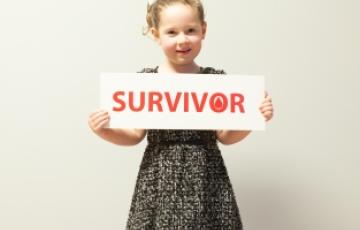
Callie
At age 2, Callie started having trouble walking after a fall in early November 2015. After seeing a pediatric orthopedist for weeks and then a pediatric neurologist for an MRI of her brain and spine, we finally got an answer in January as to what was going on with our little girl.
An x-ray of her right leg and blood work showed that Callie had acute lymphoblastic leukemia (ALL). Fortunately, after a month of intense chemotherapy, she was in remission. She had been in physical rehab three times a week to regain the ability to walk on her own.
Meghan
My name is Meghan, and I am 33, almost 34 years old. In September 2016, I was diagnosed with chronic myelomonocytic leukemia (CMML) secondary to my brain cancer treatment. I noticed a lot of bruising on my legs along with occasional nose and gum bleeding. My oncologist did a bone marrow biopsy, and I was given the news the next day that I had CMML. The only option was a stem cell transplant. My sisters were tested, but they were not a perfect match, so I was put on Be the Match.
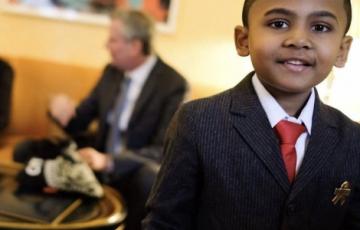
King
King has a rare combination of a blood cancer called leukemia (high risk) and G6PD which is an incurable, lifelong blood disorder. His treatment plan is 3 1/2 years of daily chemotherapy. He is up to 75 pills per month, and this does not include intravenous or spinal chemo.
Unfortunately, as he gets older, the amount of chemo and medication he has to take will increase. He is three years into treatment, and has experienced several severe complications throughout this time.

Luis
I used to donate blood at least three times a year. I did it as a way of helping others and never realized it would one day lead to me being diagnosed with myelodysplastic syndrome. But that’s exactly what happened in 2006, when a case of anemia kept me from donating blood that year.
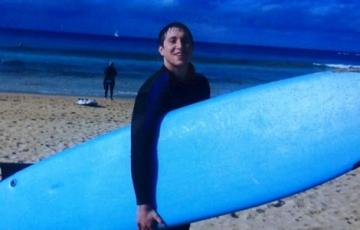
Kathie & Dave
Dave and I have been a part of The Leukemia & Lymphoma Society (LLS) since 1998. I can’t even remember how many Team In Training events we’ve done. We have both done at least one a year if not more since Michael, our son, was diagnosed.
This picture explains it all. Michael was 5 years old when he was diagnosed and of about 10 kids going through treatment with him at the time, I think only he and another are still here today. I know the statistics should be better but that’s the reality for us.
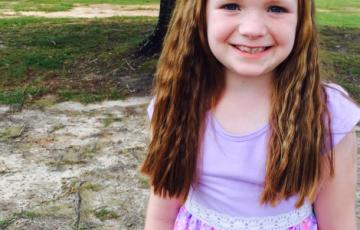
Charlie
At two and a half years old, Charlie was diagnosed with acute lymphoblastic leukemia (ALL).
Soon after being diagnosed, she underwent surgery to insert a port-a-cath so she could receive chemotherapy treatments and make route blood work easier on her. Chemotherapy treatments were extremely hard on her little body and she refused to walk. She had neuropathy from the treatments.
Sarah
On October 19, 2023, I went to urgent care for a cough that wouldn't go away. Turns out, it was a little more than a cough. A large mass in my chest was causing pneumonia. Two weeks later, I finally had a name for the mass ― primary mediastinal B-cell lymphoma (PMBCL). One thing that was very important to me early on in my cancer journey was fertility preservation. I knew that the chemotherapy I would get would put me at risk for infertility, so I advocated for myself and got an early referral to the reproductive and endocrinology (REI) clinic near me.
Reid
I was diagnosed with chronic lymphocytic leukemia (CLL) in May 2022. It was a rough time with 10 blood transfusions, weeks in the hospital, and learning a new “normal”.
But that is not my story.
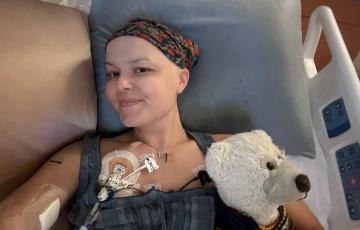
Olivia
This past week marked 100 days in remission post-transplant. I am 27 and was diagnosed about a year ago on November 8, 2023, with T-cell precursor acute lymphoblastic leukemia (ALL). Anyone who is familiar with this disease has an idea of what I've been through. This included numerous spinal taps, intense treatments, clinical trials, the horrible reactions and side effects of chemo and radiation, and lastly, the pure pain and exhaustion of a bone marrow transplant. I've spent over 100 days in the hospital these past nine months and the past 100 days at home recovering.

Lisa
My name is Lisa, I am 50 years old. On March 5, 2012, my life forever changed. I went from being Lisa, wife to John, mother to Tristan (now 14), and stepmother to John (now 35) to Lisa, acute myeloid leukemia (AML) patient.
Making Treatment Decisions
Adults living with blood cancer must make decisions about treatment, family, work or school and finances. If your child has been diagnosed, you must make similar decisions for your son or daughter.
Gathering Information and SupportYou'll need to choose:

Sofia
Sofia’s story starts in November 2022. Actually, it starts on March 17, 2019, when she was born. She has been my fierce, independent, strong-willed little girl from the get-go. Once she started walking, she was an unstoppable force. Contrary to her cautious, older brother, Sofia seemed fearless. She loved to climb to the top of the playground structure meant for kids twice her age. She loved gymnastics and took after Mommy with her love of the bars, anything she could hang or climb on.

Sophia
I was diagnosed with acute myeloid leukemia (AML) one month before finishing my freshman year of high school. It was shocking and devastating to me and my whole family. I had to leave school, be hospitalized, and begin intense chemotherapy immediately.

Amanda
"He was selfless, unbelievably selfless," said Amanda about her father, Andrew. "He did everything for everybody. He worried enough for our family plus more. And never showed it. He worked extremely hard to provide us with everything we could possibly need."
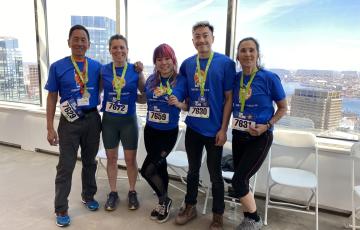
Tristan
I live in Colorado but grew up in Massachusetts and am an elite rock climber. I've traveled worldwide to climb and was the 2015 collegiate national champion. In April 2022, I was bouldering by myself and hit my shoulder on a rock behind me. Falls happen as frequently as a baseball player may swing a bat while climbing. This fall was nothing out of the ordinary except my shoulder was bruised far worse than I would expect from how hard I hit it, growing to the size of my hand by the next day. I remember looking at it initially and thinking, "Geez, I hope that's not leukemia."